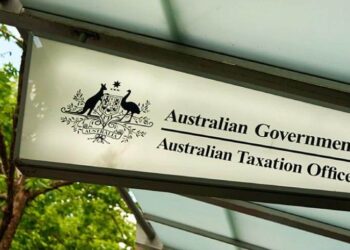Matthew Burgess, director of View Legal, said there is some confusion as to how the superannuation rules work regarding the requirement that a member’s benefits must be “cashed as soon as practicable” after their passing.
Although the rules are dictated by the Superannuation Industry (Supervision) Regulations – 6.21(1), there are some questions as to whether a death benefit can be simply transferred to a surviving member’s account by way of a journal entry.
“As in most other areas of the law, where two parties owe mutual liabilities or obligations, they can set off the liabilities against each other through a book entry,” Mr Burgess said.
He said generally, journal entries have no legal effect as was evidenced in the leading case Manzi v Smith [1975] HCA 35.
In this decision the court ruled that while book entries record transactions having legal consequences, they do not of themselves constitute transactions.
The court stated:
“We were referred to cases in which a payment of money was held to have been made by means of entries in books of account. But in those cases the entries represented the agreement of the appropriate parties….
“These decisions, quite clearly, are not authority for the proposition for which they were advanced, namely, that a payment of money was made by the making by the company of a journal entry in the books of account without reference to, or without the agreement of, the persons said to be the recipients of the money. The company’s assertions in its books of account did not establish the indebtedness of the appellants or any payment of money in discharge of that indebtedness”.
The ATO states that a unilateral action by one of the parties, such as an entry in its account books, does not change the liabilities between the parties.
“This means that in any transaction it is important that there is a valid binding agreement (or agreements) supporting the existence of the arrangements to which any journal entries purportedly relate,” Mr Burgess said.
Two Interpretative Decisions by the ATO confirm this principle can apply to SMSFs where there are mutual liabilities between the relevant funds.
Both ATO ID 2015/2 and ATO ID 2015/3 consider nearly identical facts, namely that the benefits of the deceased member consisted of publicly listed shares and cash, and that the spouse of the deceased [and other member of the SMSF] wished to remain in the fund, and to re-contribute the death benefit directly to their member account.
To avoid transaction fees, the spouse wished to know whether it was possible to transfer money from the deceased member’s account to the taxpayer’s own account by way of journal entry.
In ATO ID 2015/2, it considered whether the facts constitute a payment of a ‘superannuation death benefit’ for the purposes of s 307-5(1) of the Income Tax Assessment Act 1997 (Cth), while in ATO ID 2015/3, it considered whether the facts constitute a payment for the purposes of reg 6.21 of the Superannuation Industry (Supervision) Regulations 1994 (Cth).
In ATO ID 2015/2, the ATO canvassed what is referred to as the principle in Spargo’s case more formally known as Re Harmony & Montague Tin and Copper Mining Co (1873) LR 8 Ch 407).
The regulator said in Spargo’s case “it was held that a payment will occur where two parties both have a present liability or legal obligation to the other (mutual liabilities or mutual obligations) and they make an agreement and set off the liabilities against each other using a book entry”.
However, it determined that in ATO ID 2015/3 Spargo’s principle did not apply, stating:
“Based on the principle in Spargo’s, a journal entry will only constitute a payment if there are mutual liabilities between the taxpayer and the SMSF and there is an agreement between those parties to set-off the liabilities. There is not a mutual liability in this case as the taxpayer does not have a liability to the SMSF.”
“In ATO ID 2015/3 the ATO stated that a death benefit cannot be satisfied simply by way of journal entry, as death benefit dependents do not owe anything to the fund, that is there is no mutual liability to set off against the SMSF,” Mr Burgess said.
“Therefore, death benefits must actually be paid to the death benefit dependent by the transfer of ownership of assets out of the SMSF.”
He added that the ATO also confirmed the SIS regulations do not allow for payments to be made to members by way of journal entry with regulation 6.17(2) requiring payments to be transferred out of the SMSF.
“Unfortunately, this requirement for formal payment can in a practical sense trigger unnecessary transaction costs as well as complicating and delaying the death benefit payment process,” Mr Burgess said.



Once again, the ATO is ridiculously pedantic. If the deceased member and the death benefit beneficiary are both members of the same SMSF, the beneficiary could commit to and document a contribution which will create a liability to the fund. The fund liability to the beneficiary can then be offset and recorded in a Journal Entry. Of course, this limits the capacity to the available contribution limits at the time.